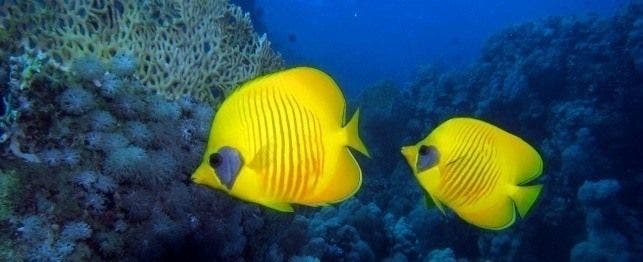
Lighting Your Saltwater Aquarium
Proper lighting is crucial to maintaining a saltwater aquarium. Most marine fish that people keep in their tanks come from warm shallow seas, where light is generally abundant but varies depending on geographic position and environment. You can usually go with “all-purpose” aquarium lighting, but in some cases you have to fashion your lighting to fit the creatures you plan to keep.
The waters in tropical and sub-tropical regions receive abundant sunlight throughout all seasons, but fish are exposed to different levels of light depending on their surroundings. In mangrove systems the water is usually filled with organic particles, mud and other detritus, which allow a limited amount light to penetrate. Reefs, on the other hand, are also found in tropical regions, but crystal-clear waters allow light to penetrate easily.
Setting Up
Because light requirements vary, aquarium systems are usually sold without lights. Make sure to purchase only bulbs specifically designed for an aquarium system and expect to purchase them regularly. Bulbs should be exchanged every six months or so because their intensity and quality will fade with time.
Usually, you can buy a hood to go with your tank that will allow for many different kinds of lighting systems. Or, if you are changing your entire set-up, ballast units or conversion kits are available to account for any special bulbs. Timer units that switch the lights on and off automatically are also becoming a standard accessory.
Since most lights will put out heat, you can inadvertently be cooking your fish if ventilation under the hood is poor. Even worse, if the housing gets too hot, it could start a fire. Make sure that the hood or lighting fixture is large enough to account for this waste heat. Some aquarists install small fans to help circulate the air and get rid of the heat. If you’re initially setting up a tank, give the lights a test run and see how hot they get. If you can burn your fingers when you touch the hood, it’s too hot.
Check that the light housing is strong, a perfect fit on you tank, and securely fixed to the aquarium, especially if you have a curious cat or a “hands-on” youngster who could accidentally knock it free.
The Right Bulbs
There are many ways to light a saltwater tank, from fluorescent bulbs to metal halides. A key factor in choosing a bulb is its K-value. The higher the K-value, the “cooler” the light that the bulb produces. However, watch out. Bulb manufacturers have marketed the K-value into a dollar-value and have priced their bulbs to imply that the bigger the K the better. Thus higher K-ratings are more expensive. For comparison, daylight is rated at about 6,500K, which is generally enough for fish.
If you invest in a reef system, you will definitely not want to skimp on a lighting system. Be aware that bigger lighting systems often require a second look at your ballast unit – you may have to upgrade to something sturdier.
- Flourescent bulbs. Most average fish-only tanks (around 60 gallons) need at least two fluorescent bulbs in them. Many aquarium owners go with one 10,000K bulb and one actinic blue bulb. There are also low light setups that usually consist of a red light that doesn’t bother nocturnal (or cave-dweller) inhabitants but allows you to watch.
- VHO, or Very High Output, lights. VHO lights are ideal for a hobby reef system. They produce much less heat than most other bulbs and are much more energy efficient. VHO’s are basically fluorescent lights that shine brighter than the usual kind, and four of these bulbs will suffice for a reef tank. Power Compact lights are essentially nothing more than one-ended, compact VHO fluorescent lights, and will also work, although they are usually used for smaller reef tanks of 30 gallons or less.
- Halide bulbs. Almost all reef-building (or hermatypic) corals do best under metal halide bulbs, which are most often used by the serious reef-keeper. But they use more energy and put out enormous amounts of heat, which usually requires that they be at least six inches above the water’s surface and that a hood fan or some other ventilation system be installed. Their spectrum isn’t as complete as the spectrum produced by fluorescent lights, so you may want to consider mixing a VHO or two in with them. Metal halide bulbs are relatively cheap, so replacing them is not a major cost.
Another advantage to metal halide lighting is entirely aesthetic: the light isn’t as strong and so it falls unevenly on your reef, creating shadows and exaggerating any movements in the aquarium. Shadows of the water’s gentle ripples undulate across the reef under this light, most closely recreating the natural scenery. Those who have done it will admit that the initial hassle a metal halide lighting system requires is well worth this beautiful effect.